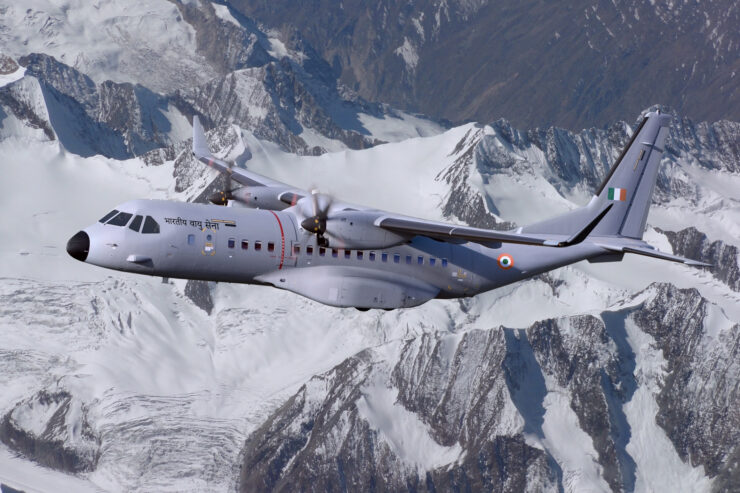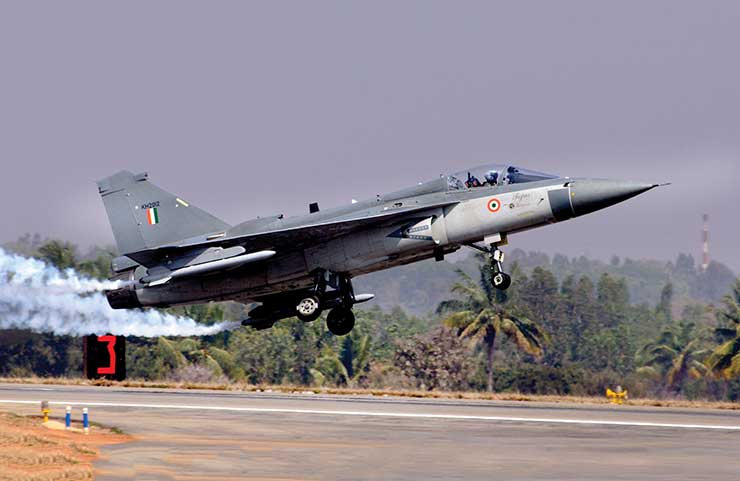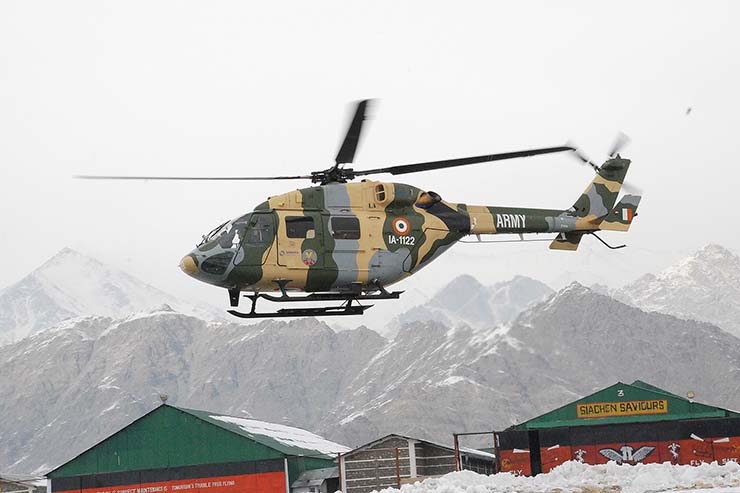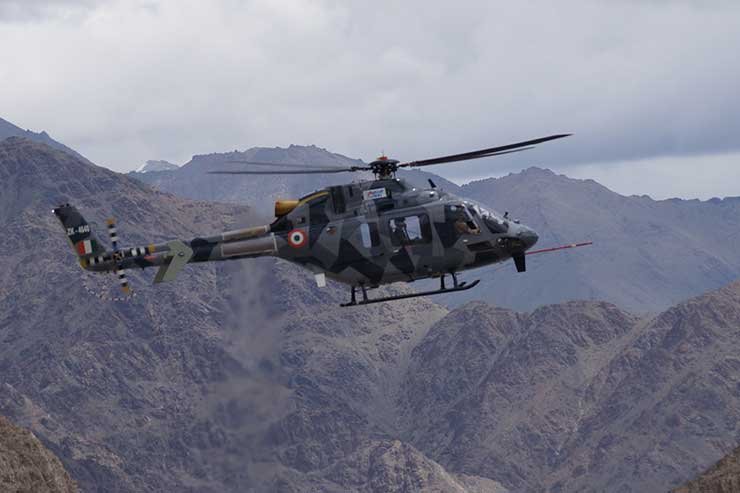
India has finally taken the path of self-reliance “Atmanirbharta” in defence with full focus. India is already the fifth largest economy of the world, and slated to be the third by 2027. India’s GDP is $3.737 trillion in 2023, and $13.033 trillion by purchasing power parity (PPP). The target of $5 trillion is highly achievable by 2025. India is the fourth most powerful military power.
India’s civil aviation sector is the fastest growing in the world. India’s fighter aircraft production eco-system is nearly in place. Four types of indigenously designed helicopters are already in service. The CASA C-295 will soon be built in India. Defence Ministry’s positive indigenisation list where work is in progress cover 458 items. Clearly not just to make, but also to design in India is the target.
Aircraft manufacturing requires the highest levels of technology, higher than even space flight. Game changing emerging technologies impact aerospace most. The obsolescence also sets in early. Most countries do not easily part with aviation technologies. Therefore the greatest return on investment and achievement for a nation is in aircraft technologies.
Government Drives Indigenisation
In India’s annual defence budget for 2023-24, out of the total defence capital budget of Rs 1.62 lakh crore, Rs 1.21 lakh crore (75%) was earmarked to acquire only locally produced systems. Significant part of the defence R&D budget is set aside for the academia and start-ups. The Defence Acquisition Procedure (DAP), is continuously being refined to improve environment for domestic defence industry’s growth. Special Purpose Vehicles (SPV) are being encouraged between DRDO and private players. Increased defence production will also open avenues for exports and amortise costs. It will also generate jobs.
Policies are supporting Foreign Direct Investment (FDI) in defence production. The defence manufacturing corridors should also push defence manufacturing. Defence exports reached an all-time high of approx. Rs 15,920 crore in FY 2022-23. Over 10-times increase since 2016-17. India exported defence items to over 85 countries. The target of $22 billion defence production and $5 billion export by 2025 might be achievable.
Fighter Aircraft Production
Around 35 LCA Mk 1 are with the Indian Air Force (IAF). 83 LCA Mk1A are on order. Mk1A made its first flight on 20 June 2022. HAL is on track to deliver first Mk 1A by early 2024. The full batch will be delivered by 2029 at production rate of 16 per year.
The Medium Weight Fighter (MWF) LCA Mk 2 design is frozen, the metal cutting is taking place and first flight is scheduled for end 2023, and the aircraft should be inducted in 2028-29, by when the Mk1A supplies would complete. The aircraft will be a 4.5 generation fighter of Rafale class.
IAF requires nearly 200 LCA Mk 2 to replace the Jaguar, Mirage 2000 and MiG 29 aircraft. The other LCA variant is the Twin Engine Deck Based Fighter (TEDBF) for Indian Navy. Significant LCA assemblies have been outsourced to the private sector. Meanwhile, the rate of production needs to go up to around 24 aircraft a year for IAF to get sufficient numbers. A new production line is coming up at Nashik.
The AMCA’s Preliminary Design Review (PDR) has been completed. The Critical Design Review (CDR) is expected to be cleared soon. The approval from Cabinet Committee on Security (CCS) will happen next, likely by mid-2023. The physical metal cutting will start thereafter.
DRDO Chief announced at Aero India that AMCA’s first-flight might take place seven years from now. The aircraft will be produced under Public-Private-Partnership (PPP) model. Most parts of the airframe are being made in India. Some systems like aero-engine (GE F 414) will still be imported.
There are some other avionics and airborne radar that are being made through joint ventures with friendly foreign companies. The weapons are mostly being made in India, using Sixth generation technologies. IAF needs 200 AMCA. Hindustan Aeronautics Ltd (HAL) is also working on a supersonic lead-in-fighter-trainer HLFT-42.

Well Placed in Helicopter Production
HAL has years of experience of license production of hundreds of Aerospatiale SA 315B class helicopters. Notwithstanding some continued technical problems, nearly 340 indigenous Advanced Light Helicopter (ALH) ‘Dhruv’ have been built. Over 90 armed ALH ‘Rudra’ are flying, and 75 more are on order.
The Light Combat Helicopter (LCH) ‘Prachand’ is already flying with IAF and the Indian Army. There are 200 confirmed orders between the two services. The Light Utility Helicopter (LUH) is also operating successfully. The same will also be inducted in all the three services in large numbers. HAL plans to produce nearly 1,000 military helicopters in the coming years. The Indian Multirole Helicopter (IMRH) is a medium-lift helicopter currently under development by HAL.
In February 2023, PM Modi dedicated the new helicopter factory at Tumkur, to the nation. Clearly India should not have to buy helicopters from abroad hereafter.
Transport Aircraft Production – Catching Up
56 EADS-CASA C-295MW transport aircraft for the IAF and six aircraft for Coast Guards have been contracted. 16 will be made abroad, and 40+6 will be built in India by a Tata’s led consortium within 10 years. This will be the first time an operational transport aircraft will be built in India, and the first by an Indian private sector company. If successful, these could also replace the An 32 one day.
India had earlier built the HS-748 and Dornier 228 in India under license production. Indigenous Hindustan 228 variant of the Dornier are being built for civil use. Meanwhile National Aerospace Laboratories’s (NAL) 19-seat Saras is still under development. The NAL and HAL are also working on an 80-100 seat Indian Regional Jet (IRJ), but it is still on the drawing board.
Meanwhile, China has already inducted over a 100 indigenously built Comac ARJ-21 (90 seat) regional jet, and has begun inducting the Comac C919 (160-seat) narrow-body airliner. India thus has a long way to go.
Considering that Indian civil aviation requires large number of airliners, this needs acceleration. IAFs additional AEW&C aircraft are proposed on six pre-owned A321 Airbus platforms. Similarly, IAF’s multi mission tanker transport (MMTT) requirements would also be met by converting pre-owned airliners. The process needs to be fast tracked.
Indian Private Sector’s Role in Aircraft Production
A few big private industrial houses are now well established in aircraft defence manufacturing. Tata Aerospace and Defence have been making the AH-64 Apache combat helicopter fuselage; aero-structures for Boeing’s CH-47 Chinook helicopters; and C-130J major aero-structure components for global customers. Sikorsky, a Lockheed Martin company, also relies on Tata Advanced System Limited (TASL) for global supply of S-92 helicopter cabins. Tata group is working with GE to manufacture CFM International LEAP engine components in India. Lockheed Martin selected TASL to produce F-16 wings in India.

There are several private companies making defence electronics, large aero-components, advanced technology components and sub-systems. Dynamatic Technologies makes assemblies of vertical fins for Sukhoi 30 MKI fighters. They are also supplying aero-structures to Airbus for its A320 family of aircraft and the wide-body 330 aircraft. Hyderabad’s VEM technologies manufactures centre fuselage for LCA Tejas. Many Indian MSMEs and start-ups are in defence production, and their presence was visible at the Aero India 2023.
UAVs and Drones Manufacturing
Indian armed forces have a huge requirement of large and medium unmanned aerial vehicles (UAV). India needs drones for civil and military markets, both. Manned Unmanned Aircraft Teaming (MUM-T) has been tested globally, and operational concepts are in place.
Drones are being used for different roles including ISR, logistics delivery, armed attacks on ground and aerial targets, laser lasing, and as electronic warfare and communication platforms.
DRDO’s Tapas medium altitude long endurance (MALE) and Ghatak UCAV look promising. DRDO must find private partners for UAVs. Adani Elbit Advanced Systems India Limited is producing Hermes-900 UAVs in India. Many start-ups have entered drones and counter drone manufacturing. These include Newspace Research & Technologies, Paras Aerospace, Throttle Aerospace, General Aeronautics, Redwing Labs, Dhaksha Unmanned Systems, UrbanMatrix Technologies, Thanos Technologies, and Auto Micro UAS, among many others.
As per Drone Federation of India, the manufacturing of drones and related systems is picking up in India, but key components like battery, motors, sensors, semiconductors, GPS, and cameras are still being imported.
Task Force Approach for Aero-Engine
DRDO’s Gas Turbine Research Establishment (GTRE) has struggled to make a turbo-jet engine for many decades. There are very few aero-engine manufacturers in the world and they closely guard technologies. World over, many engines are being made by consortiums or joint ventures.
India has a significant market for both. India may best get into a Joint Venture that could be a win-win for both sides. India also needs small engines for UAVs and cruise missiles. An electric and hybrid engine is where the future lies. India must set up a Task Force under PMO to develop the aero-engine.

Huge MRO Market
India has a huge Maintenance, Repair and Overhaul (MRO) market for civil and military aircraft and engines. The current Indian airliner fleet of around 750 aircraft will more than double in five years. It will be the third largest fleet in the world by 2024.
The Indian MRO industry was just $1.7 billion in 2021, constituting around 3.5% of the global MRO market worth US $45 billion. The Indian market is expected to be $4.0 billion by 2031, growing faster than any other country. India thus has great potential to be a significant regional MRO hub and gradually strive to establish its foothold in the global supply chain.
The current major Indian MRO players are, AIESL (Air India Engineering Services Ltd), Air Works India, and GMR Aero Technic Limited, among a few others. The airlines’ growth makes a great case for strategic investors, Original Equipment Manufacturers (OEMs) and global MRO players. Policy initiatives such as the MRO Policy 2021, National Civil Aviation Policy 2016, rationalisation of GST, removal of Gross Turnover Tax (GTO), etc. should incentivise the industry.
Incremental steps such as joint ventures with established global MRO players, and initial focus on lower IP control (electrical and electronics, avionics, structural repair, etc.) and a gradual shift towards the higher end of the MRO value chain could be a good approach. There is a great scope for military engines overhaul market to go to private players.
India – Great Contender for an Aerospace Hub
Ukraine conflict has shown the fragility of global supply chain markets. Aviation is a strategic sector. Additionally, the dynamics of such high demands have to be exploited by other players.
West is moving out of China, and Europe has high cost of production. In this scenario, India seems to be the next best destination. It has both high-quality manufacturing capabilities and skilled manpower. It has large land banks near airports, especially the newer Greenfield ones.
Large airliner orders must be linked to setting up manufacturing and repair facilities in India. India is all set to be a great power again. The time to act is now, lest we lose another golden opportunity. It has to be a government-led national approach.
-The writer is a IAF veteran and Director-General Centre for Air Power Studies (CAPS). The views expressed are personal and do not necessarily reflect the views of Raksha Anirveda

















